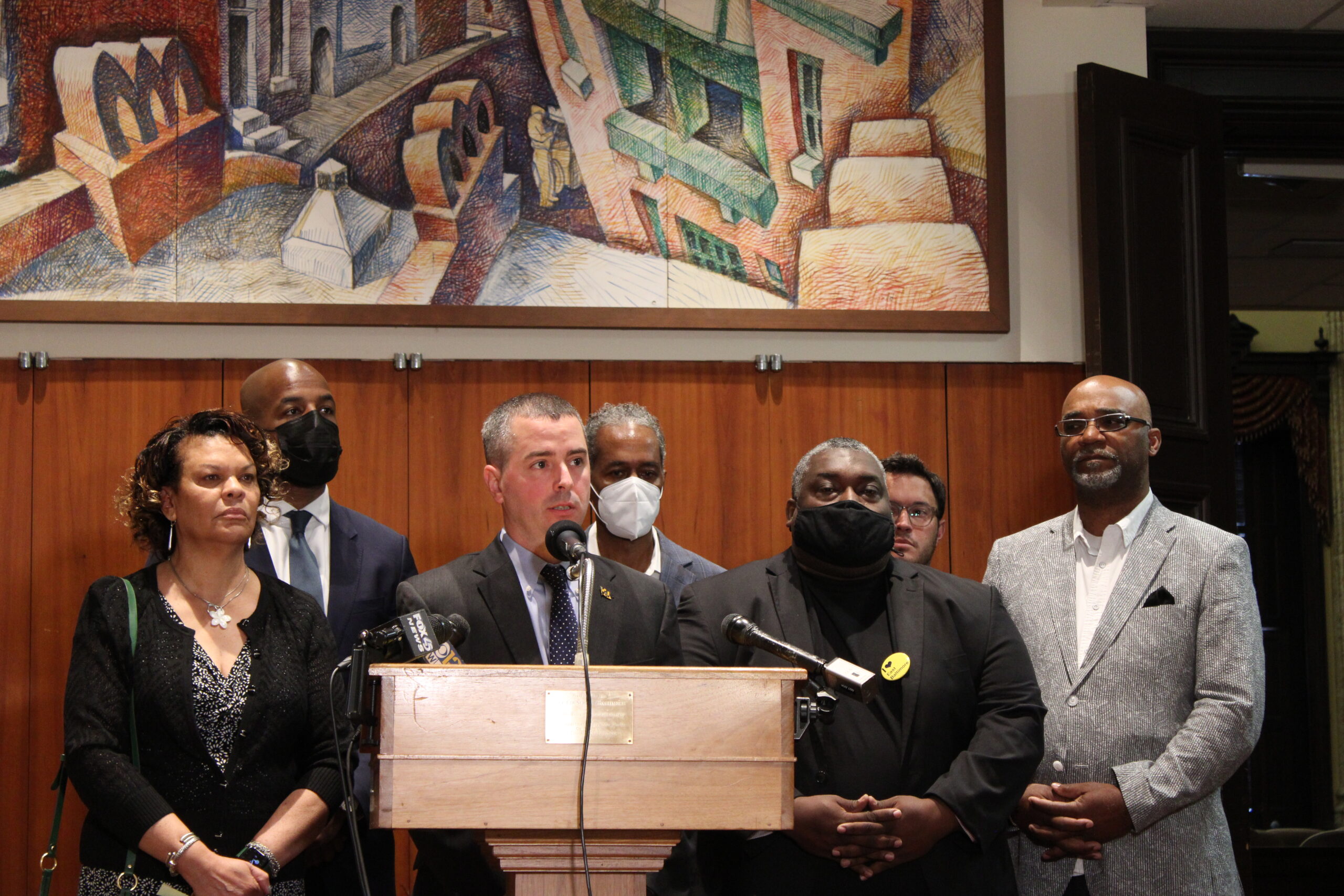Trial to Determine Mental State, Sentence of Capital Gazette Gunman Begins in Annapolis

The trial to determine the criminal responsibility of the man who blasted through the glass doors of the Capital Gazette newsroom with a shotgun began Tuesday — three years and one day after he murdered Gerald Fischman, Robert Hiaasen, John McNamara, Rebecca Smith and Wendi Winters.
On June 28, 2018, Jarrod Ramos — who had never fired a gun — drove to 888 Bestgate Road and shot five people, said Public Defender Katy O’Donnell. “And none of that will make any sense to any of us except him,” pointing towards a bearded Ramos clad in a forest green prison jumpsuit.
Ramos pleaded guilty to all 23 criminal charges against him on Oct. 28, 2019. Now it’s up to a jury to determine whether or not he was so incapacitated by mental illness that he should not be held criminally responsible for his crimes.
“He is guilty,” O’Donnell said during her opening statement Tuesday. “Mr. Ramos is guilty. And he is also not criminally responsible.”
In Maryland, pleas of not criminally responsible are akin to insanity pleas in other states.
According to the criminal code, defendants may be found not criminally responsible if they were suffering from a mental disorder that didn’t allow them to understand that their behavior was unlawful or rendered them unable to follow the law at the time they committed their crime.
Cases where defendants deny criminal responsibility are split into two phases, the first of which must determine whether they are guilty of having committed the crime. Ramos admitted his guilt more than a year and a half ago — two days before jury selection for his trial was set to begin.
During the guilt phase of these bifurcated cases, the prosecution has the burden of proving that a defendant committed the alleged crime beyond a reasonable doubt. In the second phase, a trial to determine criminal responsibility, the burden is on the defense to prove by a preponderance of the evidence — that something is more likely than not — that a defendant was mentally incapacitated during the crime.
O’Donnell told the jury that she and her co-counsel must prove that Ramos suffers from more than one mental disorder that substantially impaired him at the time he committed the attack on the Capital Gazette.
“You’re gonna hear testimony concerning Mr. Ramos’ own detailed description of the events as they unfolded that day and it’s chilling,” she said. “It’s chilling because Mr. Ramos doesn’t believe what he did was wrong. He believes it was justified.”
O’Donnell said that expert witnesses found that Ramos suffers from at least one mental disorder, including autism spectrum disorder, obsessive compulsive disorder, delusional disorder, schizotypal personality disorder, and narcissistic personality disorder.
“It will be up to you and your responsibility … to come to the ultimate decision,” said O’Donnell.
Should it be determined that Ramos was not in his right mind during the attack, he will be committed to a forensic psychiatric hospital until he is found to no longer be a threat to himself or others.
If he’s found criminally responsible, Ramos will be sentenced to prison.
Witnesses detail shooting
Both the defense and the prosecution laid out the premeditation of Ramos’ crime: He waited until his beloved cat died, sold his car and spent the remainder of his money on a lifetime membership to the United States Chess Foundation.
In testimony on Tuesday, O’Donnell and defense witnesses explained Ramos’ background with the paper and details of events surrounding the attack.
On the morning of the shooting, Ramos mailed out four letters, including one to former Capital Gazette staffer, Eric Hartley.
Ramos had a long-standing hatred of the newspaper after the publication of a 2011 column Hartley wrote entitled “Jarrod wants to be your friend,” which detailed his guilty plea in a harassment lawsuit filed by a former classmate.
His biggest concern was this sentence:
“His messages rambled… saying ‘Expletive you, leave me alone’ though she hadn’t written him in months.”
O’Donnell said that Ramos was afraid that people would read that line and believe he was crazy or delusional — “that he was hearing voices in his head.”
He would go on to file a lawsuit against the paper.
Ramos’ June 2018 letter to Hartley came in the form of an unsigned greeting card that read: “Smile! It’s your day and all eyes are on you.”
Inside of the letter’s pink envelope was a CD with files that showed photos of Capital Gazette staffers and members of the editorial board with their children labeled “orphan,” and an article from former Editor-in-Chief Rick Hutzell detailing editorial board meetings held on Thursday afternoons that public officials could attend.
The shooting took place on a Thursday at 2:33 p.m., but no editorial board meeting was held that day. O’Donnell said that the five people Ramos murdered had never done anything to him.
“They were related only by the association of the Capital Gazette,” she said.
Video surveillance from the front and back doors of the former Capital Gazette office shown to the jury Tuesday showed employees scrambling to escape as Ramos opened fire.
Ramos barricaded the back door, forcing the remaining employees to hide themselves away.
Once Ramos finished shooting, he called 911. In the cross-examination of Anne Arundel County Police Detective Jason DiPietro, Anne Arundel County State’s Attorney Anne Colt Leitess read the transcript to the court:
“I’m the shooter,” Leitess read. “The shooting’s over. I’m unarmed.”
The call was accidentally directed to dispatchers in Baltimore City. People working in an adjacent suite alerted local authorities a minute after Ramos blasted the glass door open.
After the shooting, Ramos also logged onto a computer to tweet, “F— you, leave me alone,” let his hair down from a ponytail, removed his wristwatch, bright orange earplugs and shooting goggles and laid facedown under a desk until he was found by Annapolis City Police Officer Wesley Callow.
His shotgun was found discarded in a cubicle shared by Fischman and Hiaasen, both of whom were discovered under their desks.
Inside the gun, investigators found a note. The first sentence read: “There are few problems in the world that cannot be solved through clear and concise communication.”
O’Donnell described him as “calm” and “emotionless” in the face of law enforcement, saying he “remained virtually silent” during his interrogation.
“He wouldn’t even give his name,” she said. “He said, ‘Ask the editor of the Capital Gazette.”
The trial is scheduled to go on for about two weeks.
Leitess told the court that the prosecution will hold their opening statement until the defense is finished presenting its case. But she didn’t show up empty-handed: Leitess and Public Information Officer Tia Lewis entered the courtroom Tuesday morning with carts full of documents.
Peeking through the back of a thick stack of papers was a picture of Gerald Fischman’s smiling face.




 Creative Commons Attribution
Creative Commons Attribution